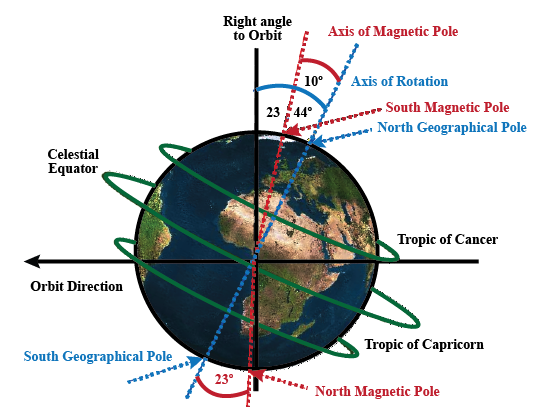Solve
Guides
0
Question
The change in seasons on the Earth occurs because
- the distance between the Earth and the Sun is not constant.
- the axis of rotation of the Earth is parallel to the plane of its orbit.
- the axis of rotation of the Earth is perpendicular to the plane of its orbit.
- the axis of rotation of the Earth is tilted with respect to the plane of its orbit.
Open in App
Solution
Verified by Toppr
We have seasons because the Earth is tilted as it makes its yearly journey around the Sun.
The Earth's axis is tilted at an angle of 23.5o. This means that the Earth is always pointing to one side as it goes around the Sun. So, sometimes the Sun is in the direction that the Earth is pointing, but not at other times. The varying amounts of sunlight around the Earth during the year, creates the seasons. The tilt of the Earth's axis is the most important reason why seasons occur.
The tilt of the Earth means the Earth will lean towards the Sun (Summer) or lean away from the Sun (Winter) 6 months later. In between these, Spring and Autumn will occur.
Hence, the seasons occurs because the axis of rotation of the Earth is tilted with respect to the plane of its orbit.

Was this answer helpful?
0
